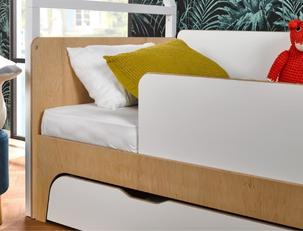90x190 Bed with Rail
Categories:
Children's Room
 Choosing the right baby blanket dimensions according to season and age
Choosing the right baby blanket dimensions according to season and age
 How to attach a headboard (with or without drilling): quick and effective soluti
How to attach a headboard (with or without drilling): quick and effective soluti
 Waterproof sheet or mattress protector: the best solution by age group
Waterproof sheet or mattress protector: the best solution by age group
 27 Original, Useful, and Trendy Christmas Ideas for Teens 2025
27 Original, Useful, and Trendy Christmas Ideas for Teens 2025
 Christmas Activities for Baby: Creative Ideas for Home & Daycare
Christmas Activities for Baby: Creative Ideas for Home & Daycare
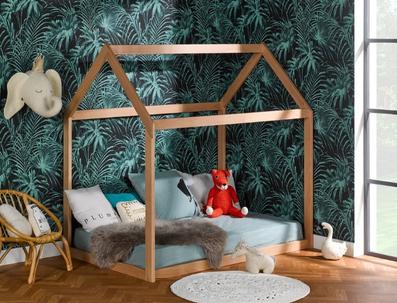
The transition from a crib to a children's bed is an important step in a child's life. However, as they gain autonomy, parents' concern grows! It's normal to worry about potential falls, and fortunately, there is equipment that prevents any risk: the bed rail. It can be an integral part of the bed or used as an accessory and be removable. Here's everything you need to know about the 90 x 190 bed with rail to choose the right model for your child.
As long as the child sleeps in their crib, they are protected from falls by the surrounding bars. However, as they grow, they start sending you signals that they would like to be free from it. They climb over the barrier to cross it and send their stuffed animals, comfort toy, and even their pillow out of the bed's perimeter by throwing them over the bars.
When the transition from crib to children's bed takes place, your child needs time to adapt. At this young age, sleep can be restless and the child turns and tosses in their bed. No longer having the bars to contain them, they risk falling out of bed.
The bed rail that covers the side of the bed offers total security by holding the child back if they get too close to the edge. Upon contact while still asleep, they have the reflex to roll in the other direction to recenter themselves in the bed.
If the bed is placed against a wall, one barrier is sufficient. If it's not, two barriers are necessary.
If you use bunk beds for siblings or a loft bed that allows you to save space in the room, the question of the bed rail doesn't arise, as it is systematically part of the bed structure.
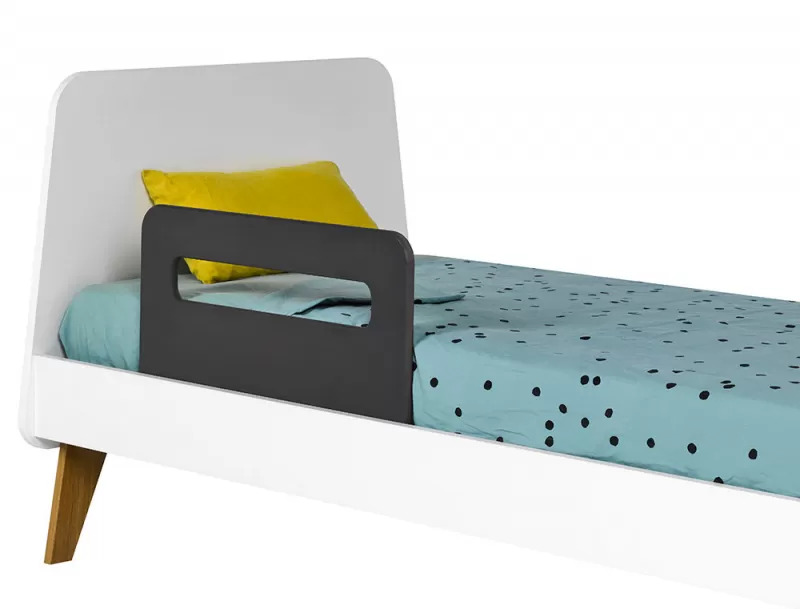
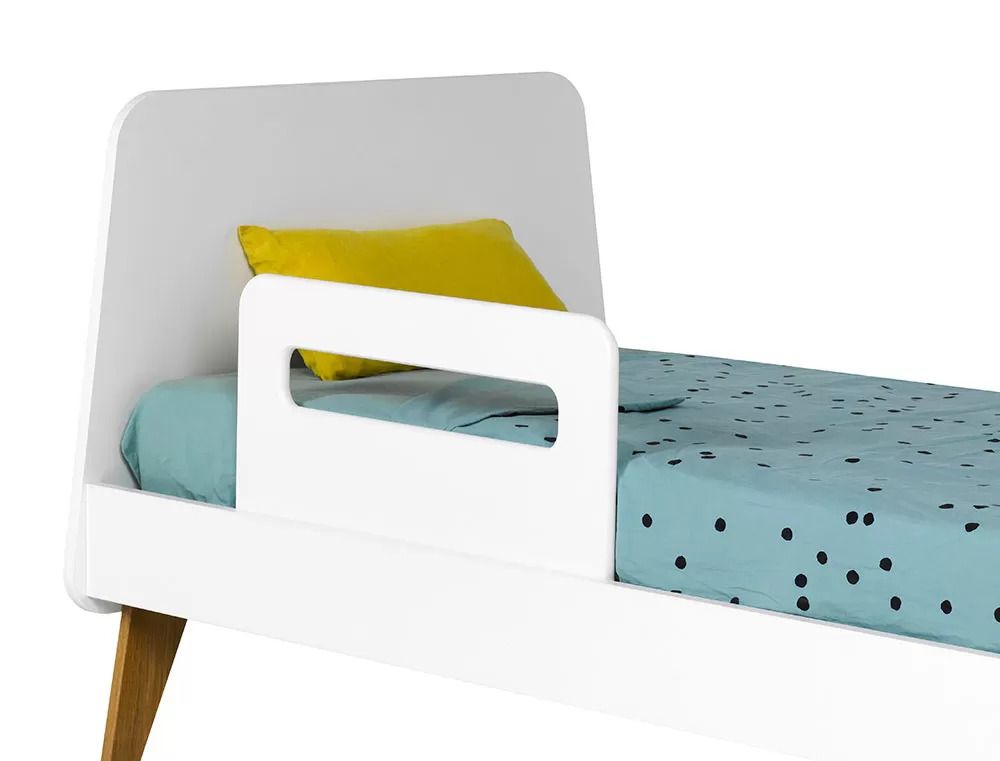
Your bed rail can be fixed or removable. In the first case, it is part of the bed structure, which means it stays in place even when your child has become accustomed to their new bedding and is no longer at risk of falling.
A removable barrier, on the other hand, can be removed after the necessary adaptation period. You have two types of removable barriers.
1. The bed rail attaches to the bed frame. It can thus be dismantled when you wish. You usually only need a simple tool, like a screwdriver or a hex key.
2. The removable bed rail is independent of the bed. It simply slides under the mattress and the child's weight prevents it from tipping over. You don't need any tools to put it on or take it off, it takes only a second to put in place or remove.
The removable bed rail is the most popular. It will be removed as soon as the child has become accustomed to their new bed, which gives them the impression of being "grown up" and taking charge of themselves. On a daily basis, the bed rail is cumbersome when making the bed and changing sheets, and you will be relieved to remove it.
Finally, the most practical and versatile equipment is the removable barrier independent of the bed. Not only can it be removed in a second without tools, but it can also adapt to all beds. It will thus serve you for vacations or even for evenings at friends' houses. Indeed, the child feels less secure when sleeping in an unfamiliar bed and room. The removable and independent bed rail fits in your car trunk and follows you everywhere. Thus reassured, your child will fall asleep peacefully, wherever you are.
The removable bed rail can also be used for younger brothers or sisters. If you no longer need it, you can resell it rather than unnecessarily cluttering your closets. A quality bed rail doesn't wear out and remains in excellent condition, allowing it to be passed on to other children, rather than thrown away.
The bed rail doesn't need to cover the entire side of the bed. For a 90 x 190 cm bed, a 120 cm wide bed rail is sufficient to hold the child.
If you have opted for the practical and economical solution of a convertible bed, the removable barrier is usually offered in this kit that evolves with your child's growth.
The Montessori bed is designed for children of all ages. The principle of Montessori pedagogy is to place the mattress as low as possible and leave the child free, so that they can progress and gain autonomy at their own pace. Being at ground level doesn't prevent falls, even if they are much less serious. This is why, for younger children, the Montessori bed — classic or house bed — can be equipped with barriers. They then cover the entire perimeter of the bed, allowing the child to sleep in the position of their choice.
These accessories must be removable to respect the Montessori concept and allow the child to become independent as soon as they can.
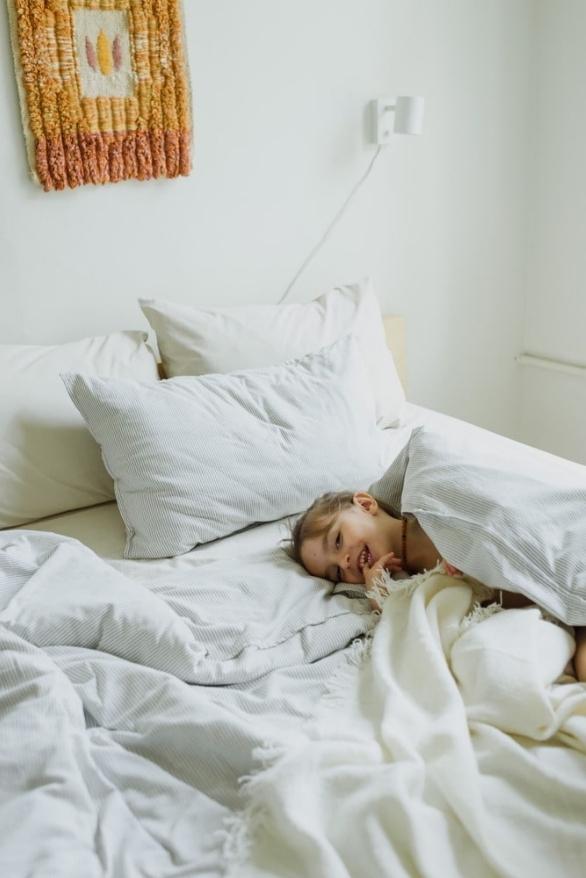
The wooden bed rail is perfect for both safety and durability. It is robust and unalterable.
Available in various colors, the wooden bed rail adapts to all beds. Remember to check that the manufacturer uses ecological paints that don't release any potentially harmful chemical emissions. At Chambrekids, we exclusively use water-based paints.
The fabric bed rail is more comfortable and lighter. To ensure the child's safety, it must necessarily have a solid rigid frame made of wood, metal, or PVC.
The fabric bed rail is more commonly used for portable beds.
Some manufacturers offer foldable and removable bed rails that can adapt to all beds. They allow you to lower them when you spend time at your child's bedside to read them a story, for example, or to give them a cuddle at bedtime.
Make sure this device is sturdy and has a locking system in the vertical position for added safety.
The inflatable bed rail attaches directly to the mattress. It has the advantage of not taking up space when deflated, allowing you to take it with you on weekends and holidays.
Check the fastening system, which is often the weak point of poor-quality inflatable barriers.
All childcare items are subject to French and European standards. Check that the bed rail is approved with an NF or CE logo.
For wooden rails, check the quality of varnishes and/or paints, which should be ecological. If you opt for a fabric or plastic rail, make sure it's not a gadget, but a real robust accessory, as your child's safety is at stake.
